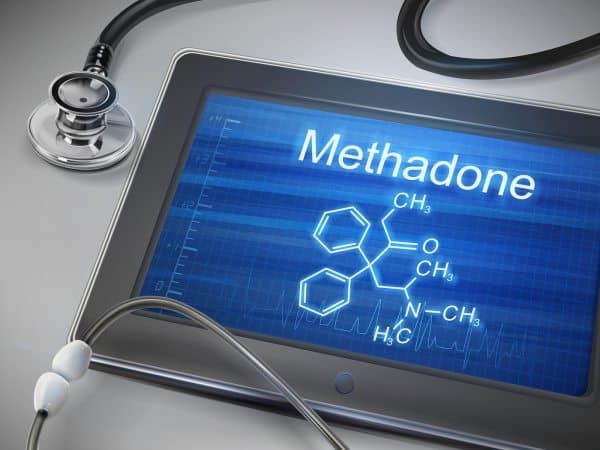Methadone Clinic Ashland NJ
Home
Top Methadone Clinic Ashland NJ Resources and Information Online
Monitoring: -Monitor closely for respiratory depression, especially within the first 24 to 72 hours of initiating therapy and following dose increases. -Monitor regularly for the development of addiction, abuse, and misuse. -Monitor for signs of hypotension upon initiating therapy and following dose increases, especially those whose blood pressure is compromised. -Monitor for signs and symptoms of QT prolongation, if used in at-risk patients or concomitantly with drugs that prolong the QT interval, consider monitoring ECG and electrolytes at baseline and periodically during treatment. -During the induction phase as patients are being withdrawn from illicit opioids, monitor of opioid withdrawal symptoms such as lacrimation, rhinorrhea, sneezing, yawning, excessive perspiration, goose-flesh, fever, chilling, irritability, weakness, anxiety, depression, dilated pupils, tremors, tachycardia, abdominal cramps, body aches, involuntary twitching, anorexia, nausea, vomiting, diarrhea, intestinal spasms. This is generally established by a simple urine sample. Scott will play a character named Quill, but what the role involves is still a bit of a mystery and Scott is not letting on.
Methadone is available in many forms, including: Oral tablets Oral solution Injection In today’s day and age, most people prefer oral tablets or solution as it is much easier to administer. Help opioid dependent individuals locate your clinic. The maintenance dose is typically between 60-120 mg. When relying on methadone as part of a drug treatment program, you will receive the medication via your clinic, rehab facility, or special pharmacy.
A lot more Resources For methadone to treat addiction

Extra Resources For mathadone Ashland NJ
Methadone was first manufactured in the US by Eli Lilly, who obtained FDA approval on August 14, 1947, for their Dolophine 5 mg and 10 mg Tablets. Use a quite large peace of cotton to filter when you fill the syringe. Methadone Maintenance Treatment For Opioid Dependence During Breastfeeding Women on methadone maintenance therapy, who express a desire to breastfeed, should be informed of the risks and benefits of breastfeeding during pregnancy and immediately postpartum. Narcotic (opioid) medication can interact with many other drugs and cause dangerous side effects or death.
Below are Some Even more Resources on mathadone
Where to Look On-line access to providers and their services is a good place to start exploring your options. The Short-Term Effects of Methadone Because methadone is a synthetic opiate, it mimics some of the effects of heroin by acting on the same receiving centers in the brain. The only time any doctor is obligated to treat you is if you're in life threatening danger.
Right here are Some More Information on mathadone Ashland NJ
Read More been on methadone for 2 months at 17 mgs rt now I want off as soon as possible what is my best way to do this Read More the methadone thing, I've been on 70 mgs of methadone liquid through a treatment maintenence program for well over 12 years straight now, and it still leaves my system within the week, and more accurately it should be fully gone within 5 days. no matter how long U take it. Clinical Pharmacology CLINICAL PHARMACOLOGY Mechanism Of Action Methadone hydrochloride is a mu-agonist; a synthetic opioid analgesic with multiple actions qualitatively similar to those of morphine, the most prominent of which involves the central nervous system and organs composed of smooth muscle. The only time any doctor is obligated to treat you is if you're in life threatening danger. Although this medication is an opioid itself, it has been used to treat people with an addiction to heroin (or another type of opioid) for more than 45 years. Although this medication is an opioid itself, it has been used to treat people with an addiction to heroin (or another type of opioid) for more than 45 years. The most common side effects of methadone are: constipation, drowsiness, dizziness, dry mouth, headache, itching, sweating, lightheadedness, nausea, vomiting, and weakness. The medication is monitored by nursing staff and is prescribed by a physician. Updated May 30, 2018 in Methadone 7 REPLIES SHARE RSS Methadone NO NO NO!!!!! The only cases where it should be used is it if it is prescribed by a doctor for harrowing conditions when the doctor believes that the drug is the only suitable drug, or for replacement therapy for opioid treatment. It is critical to understand the pharmacokinetics of methadone and to exercise vigilance during treatment initiation and dose titration (see DOSAGE AND ADMINISTRATION).
Click Here for More Information
Previous Next
You may also like:
Methadone Clinic Glen Allen VA
Methadone Clinic Carrollwood FL
Methadone Clinic Waco TX
Methadone Clinic Pittsfield MA
Methadone Clinic Pasco WA